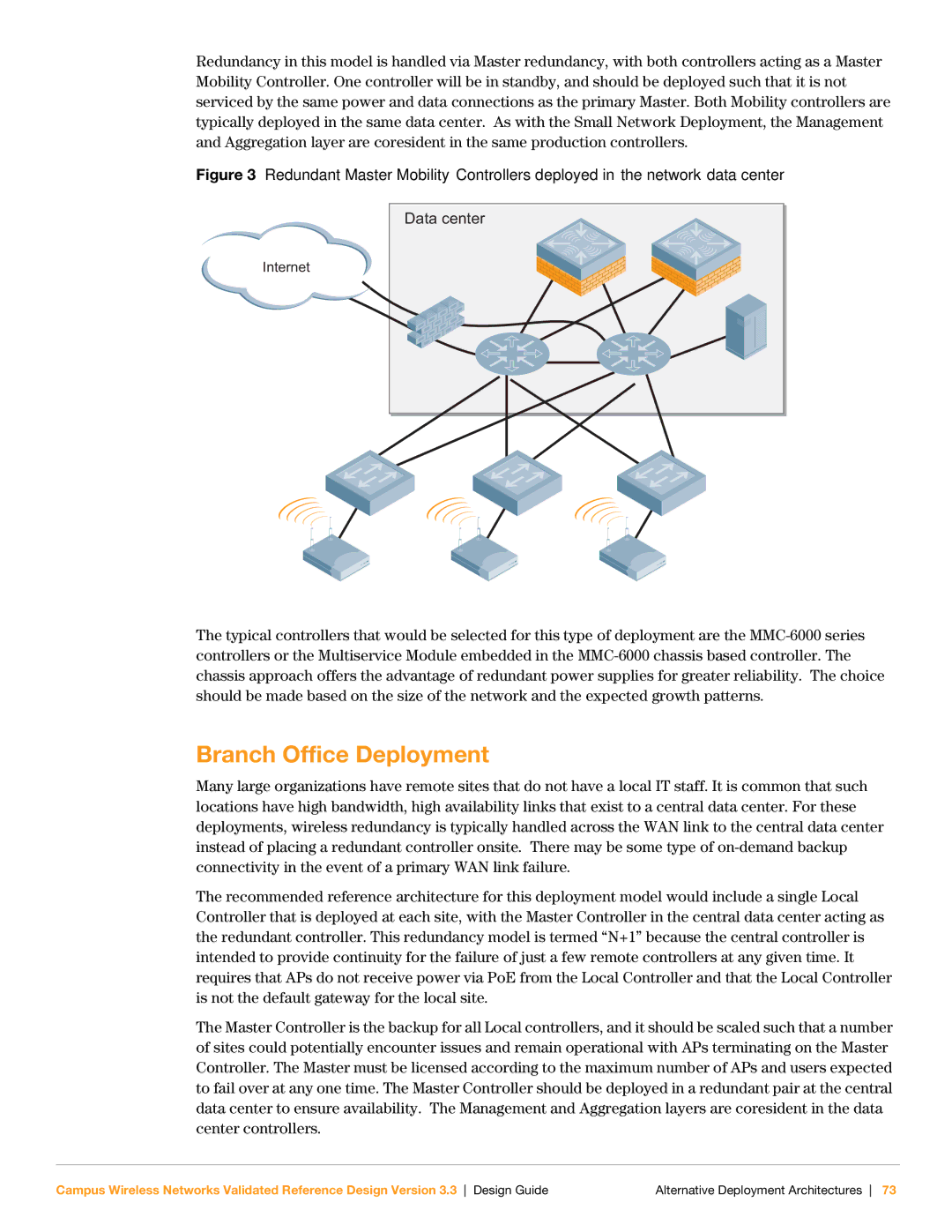
Redundancy in this model is handled via Master redundancy, with both controllers acting as a Master Mobility Controller. One controller will be in standby, and should be deployed such that it is not serviced by the same power and data connections as the primary Master. Both Mobility controllers are typically deployed in the same data center. As with the Small Network Deployment, the Management and Aggregation layer are coresident in the same production controllers.
Figure 3 Redundant Master Mobility Controllers deployed in the network data center
Internet
Data center |
The typical controllers that would be selected for this type of deployment are the
Branch Office Deployment
Many large organizations have remote sites that do not have a local IT staff. It is common that such locations have high bandwidth, high availability links that exist to a central data center. For these deployments, wireless redundancy is typically handled across the WAN link to the central data center instead of placing a redundant controller onsite. There may be some type of
The recommended reference architecture for this deployment model would include a single Local Controller that is deployed at each site, with the Master Controller in the central data center acting as the redundant controller. This redundancy model is termed “N+1” because the central controller is intended to provide continuity for the failure of just a few remote controllers at any given time. It requires that APs do not receive power via PoE from the Local Controller and that the Local Controller is not the default gateway for the local site.
The Master Controller is the backup for all Local controllers, and it should be scaled such that a number of sites could potentially encounter issues and remain operational with APs terminating on the Master Controller. The Master must be licensed according to the maximum number of APs and users expected to fail over at any one time. The Master Controller should be deployed in a redundant pair at the central data center to ensure availability. The Management and Aggregation layers are coresident in the data center controllers.
Campus Wireless Networks Validated Reference Design Version 3.3 Design Guide | Alternative Deployment Architectures 73 |
